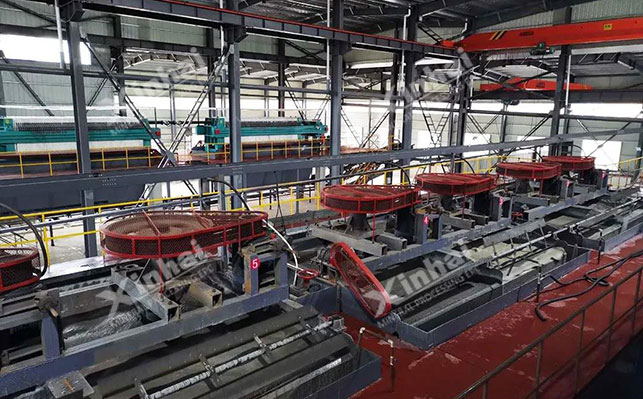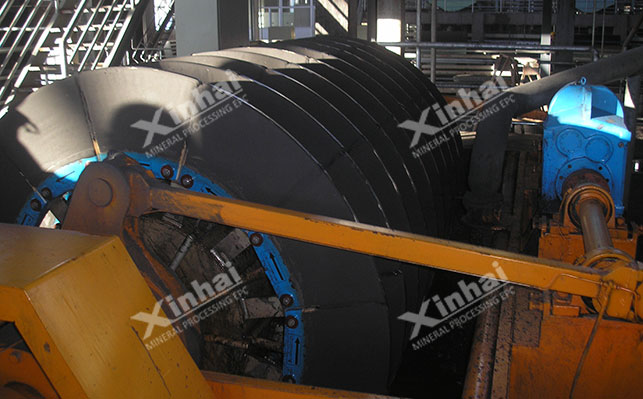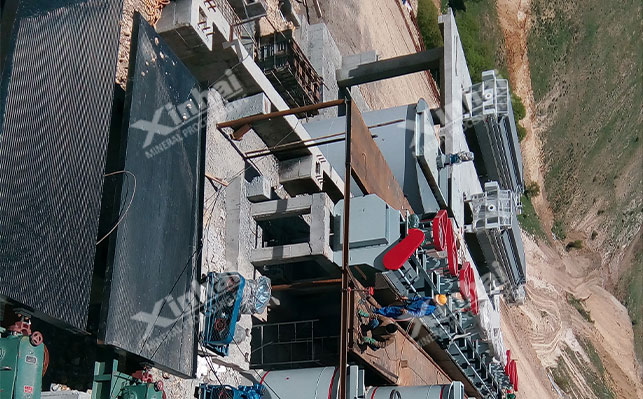
15311826613
Click to add WeChatNew energy vehicles are experiencing explosive growth, and lithium resources, as the core material of new energy batteries, are also rising in price. In order to manufacture lithium batteries, lithium ore needs to undergo a complex beneficiation process first. At present, common lithium extraction technologies include hand selection, flotation, combined method, magnetic separation, thermal cracking, radioactive separation, and particle flotation. In actual production, hand selection, flotation, and combined methods are more common.
Hand selection is a selection method that manually separates lithium ore minerals from gangue minerals. It is suitable for concentrate enrichment, large crystals of spodumene, beryl, etc. The selection particle size is about 10-25 mm. The characteristics of the hand selection method are relatively low labor efficiency, high labor intensity, low selection indicators, and serious waste of resources.

The research and application of lithium ore flotation technology started early. In the 1930s, flotation was used in the production of lithium concentrate in industry. Flotation is an important beneficiation method for lithium ore. The main minerals containing lithium can be selected by flotation, which is widely used in actual production. Direct flotation and reverse flotation are two different flotation methods for lithium ore.
Direct flotation refers to the process of preferentially flotating lithium concentrate. Finely ground lithium ore slurry is added with sodium hydroxide for stirring and scrubbing to remove surface impurities. Then oleic acid and its soaps are used as collectors to float the ore particles into the foam product in an acidic medium. After that, lithium concentrate is obtained. The concentrate is further processed to prepare lithium carbonate used in batteries.
Reverse flotation refers to a separation method in which dextrin and starch are added to finely ground lithium ore slurry in an alkaline medium adjusted by lime to inhibit lithium concentrate, and then a cationic collector is used to float silicate gangue minerals. In the reverse flotation method, the product left in the tank is spodumene concentrate.

For complex and difficult to select poor and fine lithium ores, a single flotation method is difficult to achieve the expected mineral processing indicators, so you can choose to use a combination of multiple flotation processes. Common processes include flotation-magnetic separation process, gravity separation-flotation-magnetic separation combined process.
The flotation-magnetic separation combined process is applicable to the lithium concentrate obtained after flotation. When the iron content is high, in order to obtain low-iron spodumene, magnetic separation can be used to improve the quality of lithium concentrate.
According to the density difference between spodumene and gangue ore, the coarser lithium ore is first sorted. It should be noted that when the density difference between spodumene and gangue is greater than 0.2~0.5g/cm3, it is suitable to use a vibration table or separation. When the density difference is less than 0.2~0.5g/cm3, the resuspension method can be used for separation. After desludging, the lithium ore after gravity separation can enter the flotation stage. After flotation, the lithium concentrate can further remove iron impurities to improve the quality of lithium concentrate and finally obtain high-grade concentrate.

As the "new energy source of the 21st century", the demand for lithium continues to rise, and the development and utilization of lithium resources is also particularly important. It is recommended that in the mineral processing process, the appropriate mineral processing method should be selected in combination with the components and properties of the specific lithium ore deposit to realize the scientific, economical and efficient development and utilization of lithium resources.